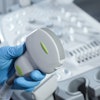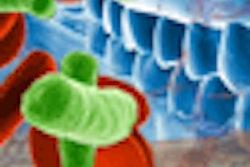Oral bacteria lifted from bite marks may provide a new source of clues for forensic experts, thanks to research projects completed by students at the Sir John Walsh Research Institute in the University of Otago School of Dentistry.
Bite marks are often left on human skin following assaults, particularly in sexually motivated attacks. But evidence based on the morphometric examination of the shape and size of those marks is increasingly being challenged in criminal courts, according to Geoffrey Tompkins, PhD, a molecular microbiologist and senior lecturer at the school.
"Bite marks have been used as evidence through morphometric analysis, but there is no scientific evidence that people have unique dentition, and there has always been some subjective element in matching bite marks to teeth," he stated in a university press release. "But it appears that each person's mouth has a unique collection of bacteria with their own distinct genotype, so the bacterial DNA profiles could potentially be matched and used as evidence."
One of the potential problems with this approach is that oral bacteria don't live for long outside the mouth, he added. But research by student Lillian Hsu showed that the DNA of dead streptococci can be recovered from bite marks to produce DNA profiles, extending the window for retrieving bacteria from 24 hours to 48 hours after the bite.
However, the technique left potential for false positives. But a more recent project by Otago doctoral candidate Darnell Kennedy successfully used a more sophisticated means of DNA analysis.
"It is a much more accurate means of testing and much more robust statistically," Tompkins said.



















